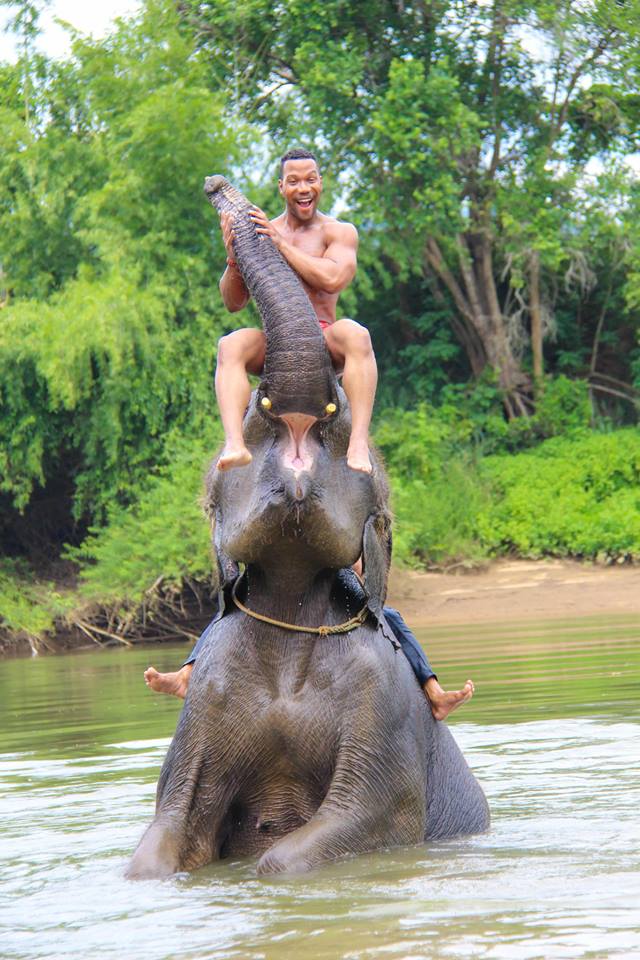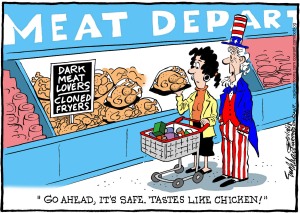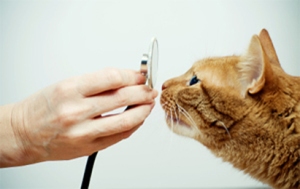Chloe Kim
It is estimated that about 68 percent of U.S. households live with animal (non-human) companions, and there are approximately 94 million pet cats in the U.S. On the other hand, the number of feral cats in the U.S. is estimated as many as 160 million. Although this number is only an estimate, it still suggests that there are almost the same or a greater number of cats living without owners than pet cats who are (hopefully) well-fed and waters by their human companions.

Feral cats are often used to mean stray cats and vice versa. Under some circumstances, they can mean the same thing. However, they are not entirely the same. Generally, a stray cat is a cat who was once domesticated, then was lost or abandoned and strayed from their home. A feral cat is a cat who was never domesticated or whose interaction/socialization with a human was lost. When a cat is born in a wild state, it is more likely that a cat would become (or remain) a feral cat. Sometimes, when a stray cat is left in the wild too long that his/her interaction with a human dwindles, he/she can become a feral cat. Either way, they both live in our communities, being exposed to a harsh and dangerous environment.
When one finds an unknown cat who seems to belong to no one, there are many things one can do: trying to find the owner first, making sure the cat does not look sick or in dangerous state, taking the cat in for scanning for a microchip and TNR (trap-neuter-return), or calling a local animal rescue center. One simple, easy, and very effective way to help the cat would be feeding and providing fresh water for the cat, and the legal consequences of giving hands for the cat may differ by states. There are only thirteen states that have laws addressing feral cats. In New York State, feral cats are considered as companions rather than as wildlife, and you can freely feed feral cats without violating any law. In Virginia and Delaware, you may feed feral cats, but then specific responsibilities may come along with the action; you may be considered the owner or caregiver after feeding feral cats consecutively, which means that you may have to be responsible for complying specific regulations for providing adequate care for them. Some states, like Connecticut, where each town adopts its ordinance as to keeping and registering feral cats, may impose certain requirements on feral cat keepers such as vaccinating and sterilizing them. New Jersey maintains managed cat colonies where feral cats are cared for by groups of volunteers, and the managed cat colonies should have their cats checked by a vet for public safety purposes. Depending on where you feed and provide shelter for feral cats, you may freely enjoy doing so or be liable for providing necessary services for them, and in extreme cases, may become liable for damages done by feral cats you feed.
Feral cats under anti-cruelty laws also vary by state. In all 50 states and the District of Columbia, one can be charged with a criminal offense, from as light as a misdemeanor to as heavy as a felony, for intentional killing and injuring of a cat. Sometimes a definition of a cat includes a feral cat as well. However, it does not mean that those laws were written with a specific intent to protect feral cats because the laws are generally more focused on pets under personal ownership. In some states, instead, feral cats are expressly excluded from their well-deserved protection. For example, Wyoming treats stray cats as a predatory animal, and therefore, there is no protection for them under anti-cruelty law. In South Dakota, one can be criminally charged under anti-cruelty law by poisoning or killing a cat who actually has an owner; feral cats or stray cats where their owners are unknown – or doesn’t exist –, South Dakota’s anti-cruelty law can’t do much for them.
A number of feral cats are growing every year, and their overpopulation poses various issues in many communities. If they are not well fed and sheltered, they may roam for food in trash and areas where food wastes are, which may develop into public sanitary and safety issues. Recently, researchers raised concern for endangered birds in Hawaii as feral cats become the birds’ predators.
Although their nature now made them difficult to socialize with humans, most of the feral cats (if not themselves at least their parents or grandparents) were once someone’s companions, who deserved nutritious food, fresh water, and a safe home. Once they were lost and abandoned, we started treating them as strangers and, in some cases, as dangers. Without specific guidelines and regulations, most people can only rely on their own resources and private organizations at best to feed and take care of feral cats; it may be challenging to protect feral cats in every aspect of law. However, state and local governments may start addressing the issue of feral cats so that we could better take care of them with what we have. Most feral cats only live less than two years on his/her own, and it is way too shorter than ten to twenty years if they are with their human companions providing them love and care they need. We should at least be able to provide them a healthy life, no matter how short it is, while they are with us.
Filed under: animal advocacy | Tagged: animal welfare, feral cats | Leave a comment »







 The enforcement of these rules has been taken to court when one of the biggest names in the sport was involved in a doping scandal. Tori Colvin’s mother, Brigid, was
The enforcement of these rules has been taken to court when one of the biggest names in the sport was involved in a doping scandal. Tori Colvin’s mother, Brigid, was  be no way for us to know if the drugs or research discovered, would work or be safe for human use. This argument is flawed in many respects, but none more than the fact that nonhumans simply are not humans. Many of the experiments that bring desired results on animals does not necessarily bring the same results for humans. Actually this is the case way more often than not,
be no way for us to know if the drugs or research discovered, would work or be safe for human use. This argument is flawed in many respects, but none more than the fact that nonhumans simply are not humans. Many of the experiments that bring desired results on animals does not necessarily bring the same results for humans. Actually this is the case way more often than not,  light on a very real issue in factory farming, and serves as a way to educate the public about what really goes on behind closed doors.
light on a very real issue in factory farming, and serves as a way to educate the public about what really goes on behind closed doors. As a result, an
As a result, an  a first-timer, or a non-Filipino, who discovers that dogs in the Philippines are slaughtered and sold for human consumption they probably think the country lacks regulations on animal welfare. Although only small groups of Filipinos eat dogs, an estimated less than 1% of the 98.3 million of the whole population, there is already an existing law on the treatment of animals in 1998
a first-timer, or a non-Filipino, who discovers that dogs in the Philippines are slaughtered and sold for human consumption they probably think the country lacks regulations on animal welfare. Although only small groups of Filipinos eat dogs, an estimated less than 1% of the 98.3 million of the whole population, there is already an existing law on the treatment of animals in 1998 
 However, the Feast of San Fermin is included in a much broad concept of celebration called encierro (bull’s confination), which is widely celebrated all around the country in almost all the villages of Spain. While in the encierro there is not any physical harm to the bulls, later those bulls can be used in the corridas (Bullfighting event) of that village or, as some of the bravest (and most dangerous) bulls, can be used in other encierros of other villages,
However, the Feast of San Fermin is included in a much broad concept of celebration called encierro (bull’s confination), which is widely celebrated all around the country in almost all the villages of Spain. While in the encierro there is not any physical harm to the bulls, later those bulls can be used in the corridas (Bullfighting event) of that village or, as some of the bravest (and most dangerous) bulls, can be used in other encierros of other villages, 













